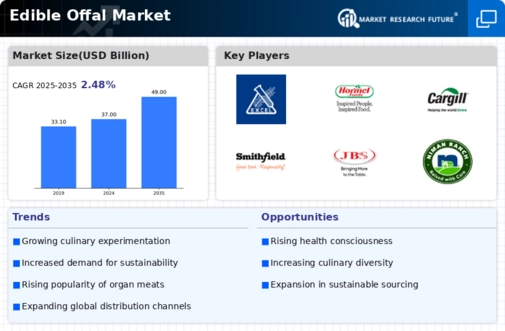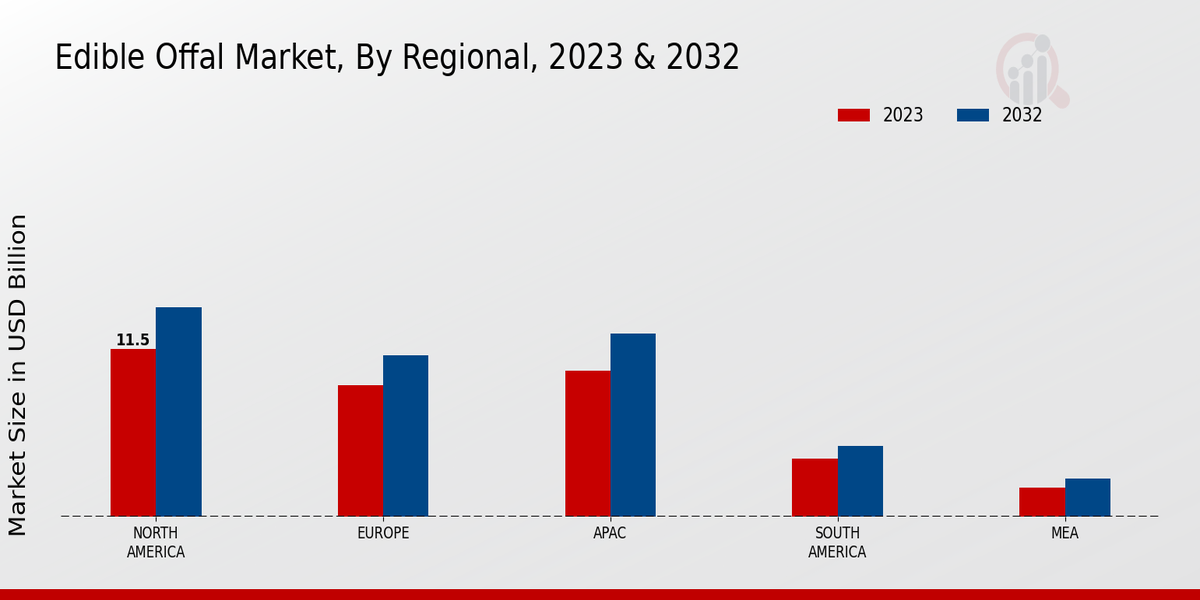Market Growth Projections
The Global Edible Offal Market Industry is projected to experience steady growth, with estimates indicating a market size of 37.0 USD Billion in 2024 and a potential rise to 49.0 USD Billion by 2035. This growth trajectory suggests a compound annual growth rate of 2.59% from 2025 to 2035. Such projections reflect the increasing acceptance of offal in various culinary applications and its integration into mainstream diets. The market's expansion is likely to be driven by factors such as rising health consciousness, culinary innovation, and sustainability efforts. These dynamics indicate a promising future for the edible offal sector.
Health and Wellness Trends
Health and wellness trends are increasingly shaping the Global Edible Offal Market Industry, as consumers become more conscious of their dietary choices. Offal is recognized for its high protein content and essential nutrients, making it an attractive option for health-focused individuals. The rise of diets that emphasize whole foods and nutrient density aligns with the consumption of offal. As more people adopt these dietary patterns, the market is poised for growth, with projections indicating a potential increase to 49.0 USD Billion by 2035. This trend underscores the importance of offal in contemporary diets, as consumers seek to enhance their overall well-being.
Culinary Trends and Global Cuisine
The Global Edible Offal Market Industry is significantly influenced by evolving culinary trends that embrace global cuisine. Chefs and food enthusiasts are increasingly incorporating offal into gourmet dishes, enhancing its appeal. This trend is particularly pronounced in urban areas where diverse culinary experiences are sought. For instance, restaurants are featuring dishes like foie gras and tripe, showcasing offal's versatility. As consumers seek authentic and unique dining experiences, the market is expected to grow, with projections indicating a rise to 49.0 USD Billion by 2035. This culinary renaissance fosters a renewed appreciation for traditional ingredients, including offal.
Sustainability and Waste Reduction
Sustainability concerns are driving the Global Edible Offal Market Industry, as consumers and producers alike seek to minimize food waste. Utilizing offal aligns with sustainable practices by ensuring that all parts of the animal are consumed. This approach not only reduces waste but also supports ethical farming practices. As the global population continues to grow, the need for sustainable food sources becomes increasingly critical. The market's growth reflects a broader movement towards responsible consumption, with offal being recognized as a valuable resource. This trend is likely to contribute to a compound annual growth rate of 2.59% from 2025 to 2035.
Cultural Significance and Tradition
Cultural significance plays a pivotal role in the Global Edible Offal Market Industry, as many cultures have long-standing traditions of consuming offal. In regions such as Latin America and Asia, offal is often featured in traditional dishes, contributing to its sustained popularity. These cultural practices not only preserve culinary heritage but also promote the consumption of offal among younger generations. As globalization continues to influence food trends, traditional offal dishes are gaining recognition worldwide. This cultural appreciation is likely to bolster market growth, as consumers seek authentic experiences that connect them to their culinary roots.
Rising Demand for Nutrient-Dense Foods
The Global Edible Offal Market Industry experiences a notable increase in demand for nutrient-dense foods, driven by a growing awareness of health benefits associated with offal consumption. Offal is rich in vitamins and minerals, appealing to health-conscious consumers. In 2024, the market is projected to reach 37.0 USD Billion, reflecting a shift towards more sustainable and nutritious food sources. This trend is particularly evident in regions where traditional diets include offal, such as parts of Asia and Africa, where it is often regarded as a delicacy. The rising interest in organ meats aligns with global health initiatives promoting diverse diets.










